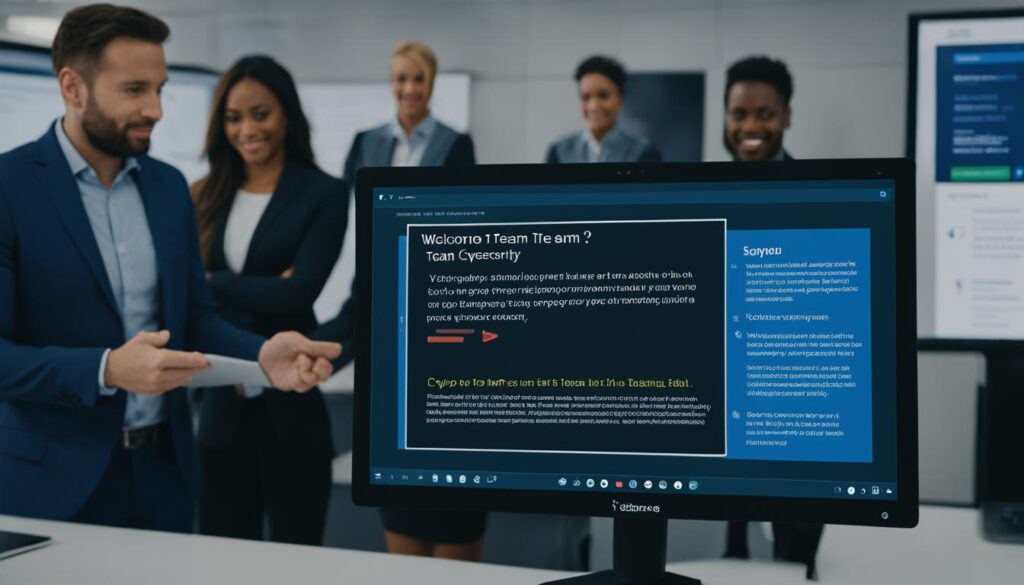Welcome to our comprehensive guide on how to onboard an independent contractor. Whether you are a small business owner or part of a larger organization, the process of onboarding independent contractors is a vital step towards building a successful working relationship. By following the best practices outlined in this guide, you will be able to navigate the onboarding process with ease and ensure a smooth collaboration with your contractors.
As an employer, it is essential to understand the independent contractor onboarding process. This involves not only ensuring legal compliance but also establishing clear expectations and providing the necessary resources for your contractors to thrive. By taking the time to onboard contractors properly from the start, you can foster a productive and mutually beneficial partnership.
Throughout this guide, you will find step-by-step instructions and valuable insights on creating an onboarding checklist, developing a contractor agreement, providing resources and granting access, and implementing best practices. We have gathered factual information from reliable sources to provide you with a comprehensive understanding of the onboarding process.
Key Takeaways:
- Create an onboarding checklist to ensure a thorough and organized process.
- Draw up a contractor agreement that clearly defines the terms of the working relationship.
- Provide necessary resources and tools to support your independent contractors.
- Grant access to internal systems and communication channels judiciously.
- Continuously assess and improve your onboarding process based on feedback and observations.
Creating an Onboarding Checklist
To successfully onboard an independent contractor, it is imperative to have a well-structured onboarding checklist in place. This checklist will serve as a guide and ensure that no important steps are missed during the onboarding process. By following a comprehensive checklist, you can streamline the onboarding process and set the foundation for a successful working relationship with the independent contractor.
Collecting Key Information
Start by gathering all the necessary information about the independent contractor. This includes their full name, contact details, tax identification number, and any other required personal information. Additionally, it is important to obtain their professional qualifications, certifications, and relevant work experience.
Preparing Legal Agreements
Next, focus on preparing the legal agreements that will define the terms and conditions of the contractor’s engagement. This includes drafting a contract that outlines the scope of work, deliverables, payment terms, and any other relevant contractual obligations. Having a legally binding agreement in place will protect both parties and ensure clarity throughout the working relationship. Utilize customizable contract templates to streamline this process and ensure compliance with local laws.
Providing Access to Resources
Equipping the independent contractor with the necessary resources is crucial for their success. Provide access to tools, software, documentation, and other resources they will require to fulfill their role effectively. This may include granting them access to company systems, providing login credentials, and familiarizing them with the organization’s workflow and processes. By providing comprehensive resources, you empower the contractor to hit the ground running and contribute value from day one.
Addressing Country-Specific Requirements for International Contractors
If you are onboarding an international independent contractor, be sure to address any country-specific requirements. This may include understanding the tax regulations, immigration laws, and compliance obligations in their respective country. Familiarizing yourself with the applicable laws and getting expert advice when necessary will ensure that you are adhering to all legal and regulatory requirements.
By creating a thorough onboarding checklist that encompasses these essential steps, you can enhance the onboarding experience for independent contractors and minimize the risk of overlooking critical tasks. Remember, a well-prepared contractor is more likely to hit the ground running, navigate their responsibilities smoothly, and contribute to the success of your projects.
Drawing Up a Contractor Agreement
Hiring an independent contractor without a well-defined legal agreement in place can expose your business to unnecessary risks. It is essential to create a comprehensive contractor agreement that outlines all the crucial details of the engagement.
The contractor agreement should clearly define the scope of work, including specific deliverables and timelines, as well as the services to be rendered. It should also address important aspects such as the length of the agreement, payment terms, intellectual property rights, confidentiality requirements, and any liability or indemnity obligations.
Using a contract template that can be customized to meet local legal requirements is highly recommended, especially if you are hiring contractors internationally. This ensures that your agreement complies with the specific laws and regulations of the jurisdiction where the contractor operates.
Partnering with a trusted global HR partner like Remote can provide access to customizable local contract templates tailored to different countries, ensuring compliance and peace of mind.

By having a well-drafted contractor agreement in place, you establish clear expectations and protect the rights and interests of both parties involved in the engagement. This legal document serves as a solid foundation for a successful working relationship with your independent contractors.
Providing Resources and Granting Access
One of the crucial aspects of onboarding independent contractors is ensuring they have the necessary resources and tools to perform their work effectively. By providing access to these resources, you can set your contractors up for success and help them seamlessly integrate into your team.

When it comes to resources, consider the documents, workflow processes, and software that contractors will need to complete their tasks. Providing them with clear instructions on how to access and utilize these resources is essential. This can be done through virtual training sessions, detailed document repositories, or access to specific software platforms.
In addition to resources, communication channels play a crucial role in enabling collaboration between contractors and the rest of the team. You should establish clear communication channels where contractors can reach out for support, ask questions, and provide updates. This could include email, project management tools, instant messaging platforms, or even video conferencing platforms for meetings.
However, granting access to internal systems should be done judiciously to maintain privacy and security. It is recommended to involve your company’s IT specialists in the decision-making process to ensure that contractors have the necessary access while maintaining the confidentiality of sensitive information.
By providing resources and granting access, you empower your independent contractors to work efficiently and effectively, promoting a positive and productive working relationship.
Conclusion
Ensuring a successful working relationship with independent contractors begins with a well-executed onboarding process. By following the best practices outlined in this guide, including creating an onboarding checklist, drafting a comprehensive contractor agreement, providing necessary resources, and prioritizing compliance, companies can set the stage for a productive collaboration.
Remember that onboarding is an ongoing process that requires continuous assessment and improvement. Seek feedback from contractors and make observations to identify areas for enhancement. By iterating on your onboarding process, you can optimize efficiency and effectiveness, maximizing the potential of working with independent contractors.
Implementing these onboarding tips will not only establish a solid foundation for working with contractors, but it will also foster trust, clarify expectations, and align everyone involved towards a shared goal. Streamlining the onboarding process benefits both companies and contractors, leading to stronger relationships, enhanced productivity, and successful outcomes.
FAQ
Why is onboarding independent contractors important?
Onboarding independent contractors is crucial for ensuring compliance, setting clear expectations, and providing the necessary resources for a successful collaboration. It helps establish a productive working relationship.
What should be included in an onboarding checklist for independent contractors?
An onboarding checklist for independent contractors should include tasks such as collecting key information, preparing legal agreements, providing access to resources, and addressing country-specific requirements for international contractors.
Is it important to have a legal agreement in place when hiring an independent contractor?
Yes, creating a contractor agreement is important to define the scope of work, payment terms, IP rights, confidentiality requirements, and liability or indemnity obligations. It helps protect both parties and ensures clarity in the working relationship.
How can I provide the necessary resources and tools for independent contractors?
Providing access to documents, workflow processes, software, and points of contact within the company is essential. Clearly communicate relevant workflows, processes, and communication channels to ensure contractors have everything they need to perform their tasks effectively.
What are some best practices for onboarding independent contractors?
Some best practices for onboarding independent contractors include creating an onboarding checklist, drawing up a contractor agreement, providing necessary resources, ensuring compliance with local laws, and continuously improving the onboarding process based on feedback from contractors.




